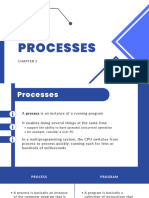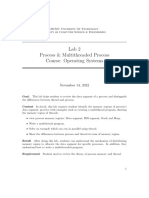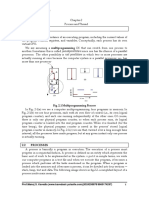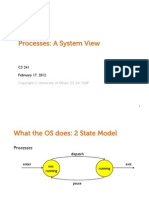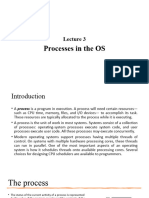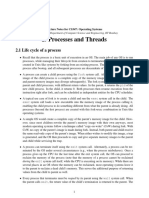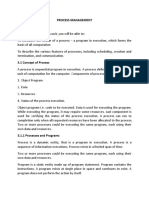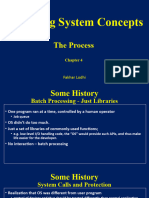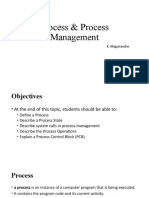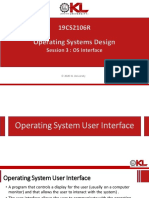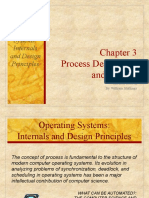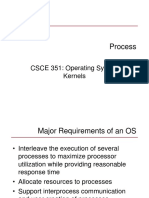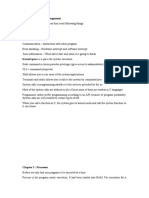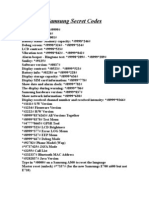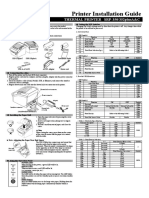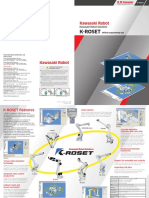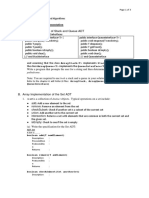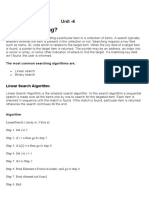0% found this document useful (0 votes)
12 views4 pagesMod 03 Content
Module 3 discusses the concept of processes within operating systems, including their creation, states, and transitions. It highlights differences in process creation across various operating systems like UNIX, Linux, and Windows, and introduces the concept of threads as concurrent execution paths within processes. The module also covers the layout of a process in memory, including the stack, heap, and global data areas, as well as synchronization issues related to threads.
Uploaded by
nightmarepumaCopyright
© © All Rights Reserved
We take content rights seriously. If you suspect this is your content, claim it here.
Available Formats
Download as PDF, TXT or read online on Scribd
0% found this document useful (0 votes)
12 views4 pagesMod 03 Content
Module 3 discusses the concept of processes within operating systems, including their creation, states, and transitions. It highlights differences in process creation across various operating systems like UNIX, Linux, and Windows, and introduces the concept of threads as concurrent execution paths within processes. The module also covers the layout of a process in memory, including the stack, heap, and global data areas, as well as synchronization issues related to threads.
Uploaded by
nightmarepumaCopyright
© © All Rights Reserved
We take content rights seriously. If you suspect this is your content, claim it here.
Available Formats
Download as PDF, TXT or read online on Scribd
/ 4







